
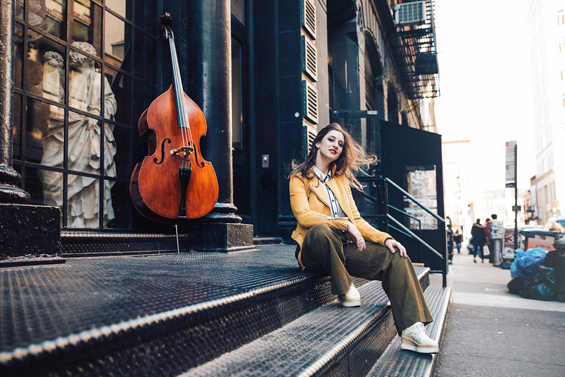
SPOTLIGHT 25: REGINALD CHAPMAN / ADI MEYERSON / JOE SHEEHAN
textura is delighted to feature the following artists in its twenty-fifth ‘Spotlight': Reginald Chapman, Adi Meyerson, and Joe Sheehan, all of them represented by excellent new albums: Prototype (Chapman), Where We Stand (Meyerson), and Songs of Lake Volta (Sheehan). textura is deeply grateful to the artists for contributing to the article.
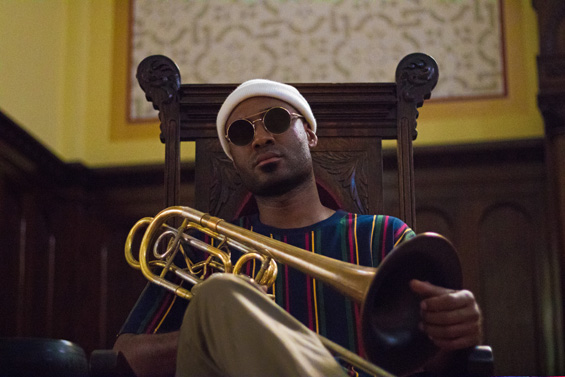
photo: Elijah Harris
REGINALD CHAPMAN
Who: I grew up in Williamsburg, Virginia where my high school band director, Steve Turner, put the double trigger bass trombone in my hand. I moved to Richmond, Virginia in 2004 to start as a music major at Virginia Commonwealth University. My musical foundation was solidified as a founding member of No BS Brass and the RVA community at large. In 2011, I began my graduate work at the University of Illinois Urbana-Champaign under the auspices of Jim Pugh. After four years, I completed my Master of Music in Jazz Bass Trombone Performance and started a Doctorate of Musical Arts (DMA) in Jazz Bass Trombone Performance with a cognate in Classical Composition. My professional career began to take flight when I took a two-year professional sabbatical to teach at Virginia Commonwealth University, play in No BS Brass, and tour extensively with indie-rock band Foxygen (on the label Jagjaguar). In the last year, I've finished my coursework and am currently working on my dissertation to complete my doctoral degree. I currently reside in Brooklyn, New York with my fiancé, where I'm a full-time touring, gigging, and recording musician.
What: What I'm creating most these days is horn-centric jazz with a slight boom-bap hip-hop tinge. I also have a newly peaked interest in twentieth-century classical composition.
Currently: Over the last decade, I've played and composed horn parts for artists of a variety of different genres of music, from rap to folk to indie-rock music. In 2017, I recorded and later toured with Foxygen to support its album, Hang. Most recently, I toured Japan with David Matthews' Manhattan Jazz Orchestra.
I'm a founding member and have been a collaborator of No BS Brass since 2006. We'll be touring the West Coast in late September, including a hit at the Monterey Jazz Festival.
In 2017, I also released a dusty bedroom hip-hop beat tape titled Toolong Tea, under the artist name Pressure Fit. Since then, I've been touring and playing live renditions of my produced songs in the Midwest, including a two-week tour in May, 2018.
I just released my debut album, Prototype, on the Fresh Selects label out of Portland, Oregon (July 2018). This album features members of Butcher Brown, No BS Brass, Odesza, and a host of other Richmond-based artists. Currently, I'm completing a second album and have a third on the way.
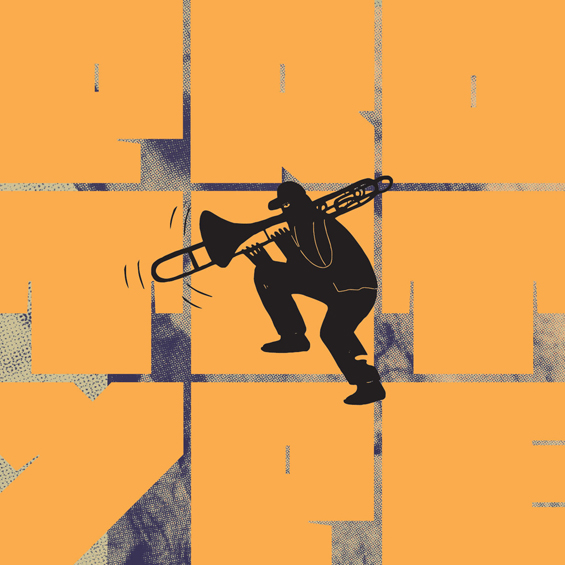
Musical philosophy: Imitate. Assimilate. Create. Innovate.
Favourite artists and strongest influences:
Pat Metheny: Metheny, especially his early work on vinyl, is one my earliest and strongest influences. He's been a prolific trailblazer his whole life, which is something I aspire to. His Americana roots are strong, his sound is distinct, and sometimes very complex, yet there's always warmth and humanity, which gives his projects universality. His American Garage is a personal favourite.
Jim Pugh: After playing a duet together at VCU in 2010, Jim Pugh immediately invited me to pursue my graduate work under his direction at the University of Illinois Urbana-Champaign. I was fortunate to receive a fellowship that helped significantly with my expenses and relocated to the midwest. Fast forward, and eight years later I'm touring Japan with Jim and his contemporaries in what is known to be the best big band on the planet, the Manhattan Jazz Orchestra. My debut album has just released with acclaim, I've nearly completed a doctoral degree, and I'm newly arrived in Brooklyn, New York. I'm not saying that he is completely responsible for all of these accomplishments; however, I am saying that his guidance has been valuable in encouraging me to pursue my dreams and execute at a high level. (For further reading, check out his Wikipedia page.)
RVA Community: I spent most of my twenties in Richmond, Virginia, which is a great place for artists to cultivate their own voices. There weren't a whole lot of slots to fit in, so everyone spent time carving his/her own path. It forced us to dream and invent, knowing that nothing was going to be handed to us. However, because RVA is home to a healthy community of artists and listeners, musicians are able to be true to themselves rather than feel the need to be a caricature of someone else. Subsequently, many RVA musicians have gone on to the world stage with a unique yet highly cultivated sound. Matthew E. White, Marcus Tenney, Devonne Harris, Ohbliv, Natalie Prass, and Pinson Chanselle are only the tip of the Iceberg.
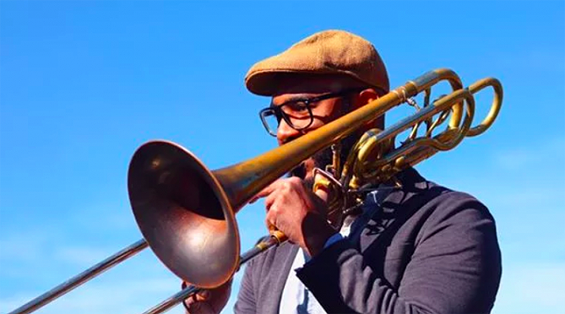
Recordings I return to repeatedly:
Raidiohead: In Rainbows
It's a moody album that's somehow perfect for however one is feeling. I can listen to it when I'm having a rough day or if I'm in a contemplative mood or if I need to rock out. There's a profound simplicity to the vocal and instrumental writing that allows for great passive listening. However, upon scratching the surface, one realizes that there's a whole world of musical ideas that aren't revealed until after multiple listens. Also, the way this album is produced somehow sounds simultaneously electric and acoustic to me.
Dave Holland Quintet: Extended Play: Live at Birdland
This album, which was bought for me as a birthday present when I was in high school, changed my perspective on what jazz could possibly be and continues to challenge my conception. Holland has an amazing way of writing wittingly, windy multi-metered ECM-style tunes for a quintet that uses vibes (Steve Nelson) as its comping instrument. Considered to be one of the best tenor sax players of all time, Chris Potter plays on this record as well. Most importantly, to a low bone player like me, trombonist Robin Eubanks is a strong presence in this ensemble. Eubanks is an anomaly in jazz as he plays a large bore horn, and uses the F valve often, without sacrificing facility and musicality throughout the entirety of the trombone range. He was the first trombonist I heard dealing with ‘modern' jazz and at such a high level. He matches the prowess and power of his co-frontman (Potter) on an instrument otherwise thought of to be unsuited for nimble lines and harmonic complexity. Also, being in the line of JJ Johnson, Eubanks plays both trombonisticaly with feet grounded in the idiom and also creatively, continually stretching the edges of his ability. Hearing Eubanks' playing early in my development gave me a basis and approach that I still draw from.
Kadjha Bonet: Child Queen
A vocalist and multi-instrumentalist, Kadjha Bonet is a highly unique individual in today's music world in that she is self-propulsed. She writes and arranges her songs, sings on them, and provides a sea of flute and string arrangements to her songs. I was lucky to catch one of her album release shows and was blown away by her self-accompaniment on guitar while singing. On Child Queen, the songs are personal, in the case of “Delphine,” a ballad to a lover (or former lover), while others, such as “Second Wind,” are uplifting. The melodies are often haunting and profound, accompanied by sparse drums, strings, and delicately placed analog synth sounds. The production has a vintage French avant-funk sound reminiscent of ‘70s era Serge Gainsbourg. I can't get enough of this record, and it's so rich and deep that I can keep drawing from it daily; I still haven't reached the bottom of it. Shoutout to Bonet, a contemporary with the daring to be both genuine and artistically thorough going in an era when doing so could be seen as obtuse.
A memorable event, concert, or experience: Prior to playing trombone, I was the first chair clarinet in my middle school band. One day, my band director, Reginald Bassett, encouraged me to switch to trombone and lent me his personal one to take home. It was an old single-trigger bass trombone, and I remember that musty brass smell. The wood case had flaking, thin leather on the outside. I remember being in the backseat of our family car, mesmerized and intrigued by the mystery of the instrument. Looking back now, eleven-year-old me had no idea this gift would lead to the trajectory of my life, taking me to experiences and locations I never could have imagined.
website: REGINALD CHAPMAN
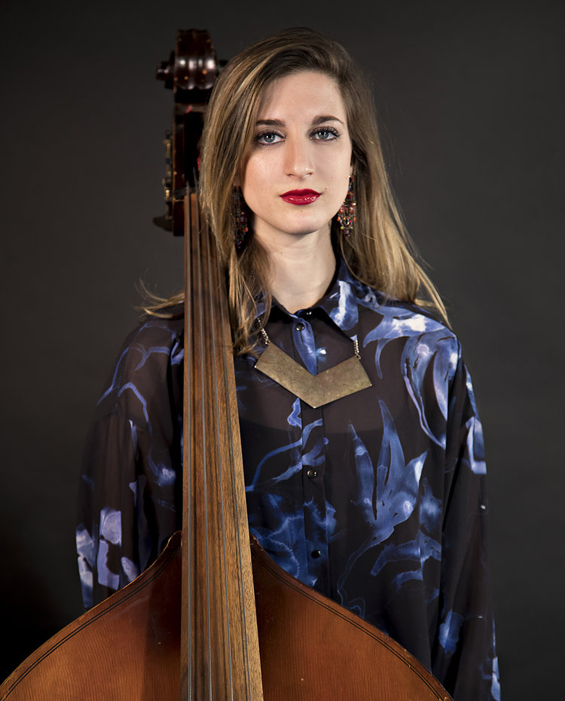
photo: Will Polanco
ADI MEYERSON
Who: Though I was born in San Francisco, I moved to Israel when I was two and grew up in Jerusalem. I currently live in New York where I've been for six years. I first got into music when I was fourteen and started playing electric bass at my school with the music major kids. I seriously got into jazz when I was about eighteen and was given a Sonny Rollins record. Then I started to play upright bass to get the ‘jazz' sound I was hearing on the record. After that I studied in Tel Aviv and continued my degree at the New School and studying privately.
What: Mainly jazz but honestly anything good that comes my way.
Currently: I'm writing some new music for a couple projects I have in mind, one on electric bass with a string quartet.
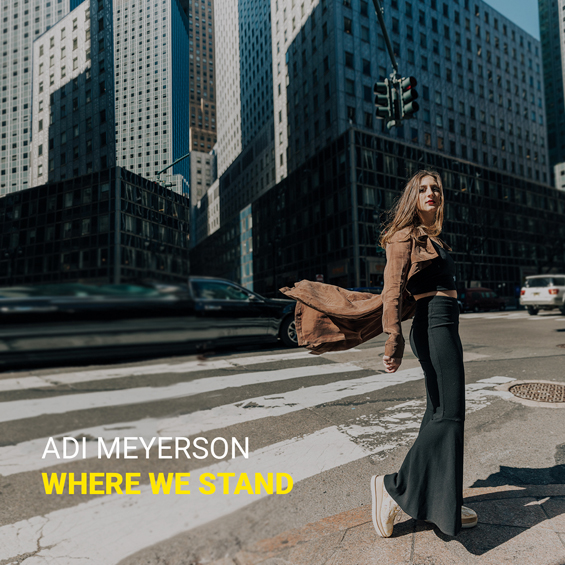
Musical philosophy: Create honestly. Honest music is usually good music.
Favourite artists and strongest influences: Oh, that's a hard one. There are so many, I feel like a little bit of everything that I listen to somehow influences my music. Lately it's been Alice Coltrane, Charles Mingus, and Ron Carter.
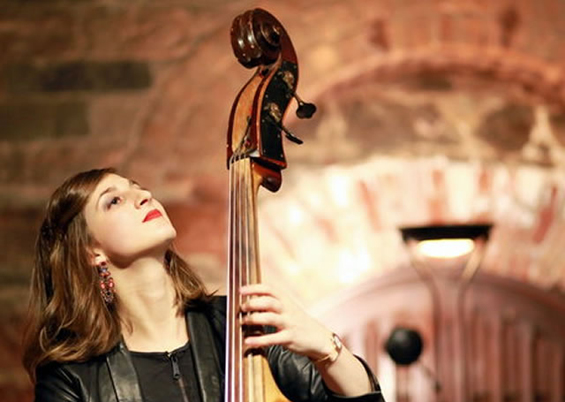
Recordings I return to repeatedly: Nancy Wilson/Cannonball Adderley, Miles Davis's ‘Four' & More, and the Ahmad Jamal Trio's Cross Country Tour: 1958-1961. All these records are pretty much perfect from beginning to end and have all influenced me in a certain way.
A memorable event, concert, or experience: My senior recital in high school. I remember feeling like this was only the first one and that this what I want to do for the rest of my life. That's pretty much when I decided I wanted to be a professional musician.
website: ADI MEYERSON
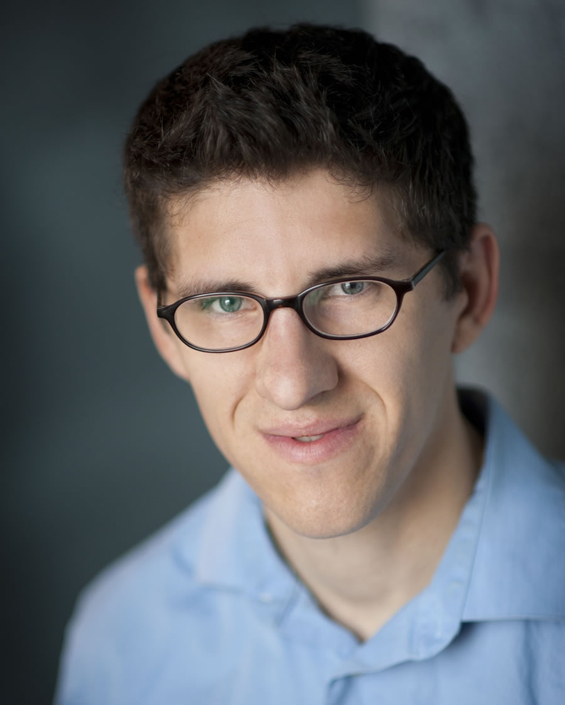
JOE SHEEHAN
Who: I'm from, and live in, Pittsburgh, PA. My musical journey roughly divides into three chapters. I spent ten years studying composition, primarily focused on the classical tradition, at several universities. Though I attained a doctorate at Indiana University, I had reached a creative dead end. Seeking artistic renewal, I journeyed to Ghana, West Africa to study its traditional music and culture. Six months of immersion, studying and performing traditional Ghanaian drumming, dance, and song, forever changed me as a musician and human being. My return to the U.S. re-ignited a longstanding passion for jazz. The historic and continuing jazz scene in Pittsburgh, and the mentorship of several musicians, fostered my growth as a pianist and performer.
What: I write songs, influenced by jazz and West African music, for the ensemble Kinetic. I also write classical chamber music, and as a pianist perform jazz, R&B, pop, hip-hop, and folk music.
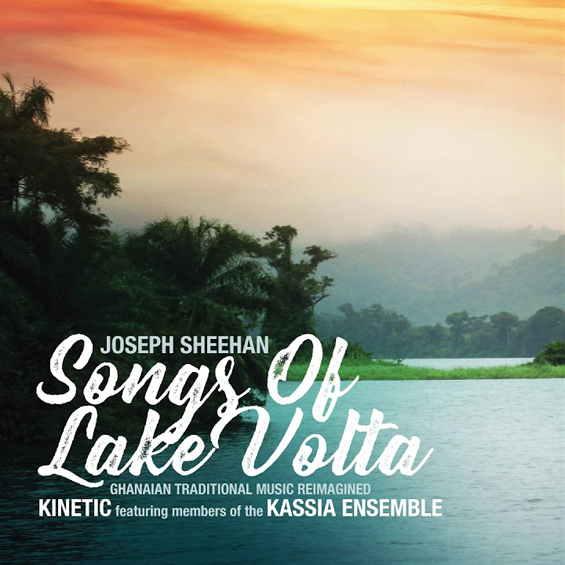
Currently: My current project is the album Songs of Lake Volta, released on Ansonica Records. This album re-imagines traditional folk songs from Ghana by surrounding them with original music I composed influenced by jazz and classical music. It's performed by Kinetic, a jazz quintet with vocalist Anqwenique, and a string quartet that is a subset of the Kassia Ensemble, an all-female classical chamber ensemble.
I was blown away by the simple elegance, vitality, and feeling within Ghana's folk songs when I first encountered them in 2008. A research trip in 2014, funded by Duquesne University's Center for African Centers, saw me returning to the country to learn twenty songs. I'm incredibly grateful to musicians in Ghana I've worked with – Apetsi, Gasco, and Yawuza – who are true stewards and scholars of traditional music in the country.
My other projects include a chamber piece for vibraphone, piano, bass, and drums for classical percussionist Lisa Pegher based in New York City, and playing live hip-hop with rapper Shad Ali in the band Trio+.
Musical philosophy: I write music to connect with musicians and audiences from different traditions. There's often a dedicated and curious fan base for any given style of music. These people genuinely value music that's thoughtful and artistic. I hope to reach these kinds of listeners by creating music, performances, and recordings that traverse different genres in a genuine and rich manner. Balance is also important. In my projects, I first aim to communicate with and respect the listener, but just as important is to challenge and expand the listener by presenting your own musical vision.
I'm also fascinated with the idea of musical wisdom. It's present, and celebrated, in the music traditions I've most thoroughly engaged with: classical, jazz, and African traditional. A wisdom, though expressed differently in each, that balances knowledge of tradition with the novelty of self-expression and stylistic evolution. It is to this quality of wisdom that my work seeks to express.
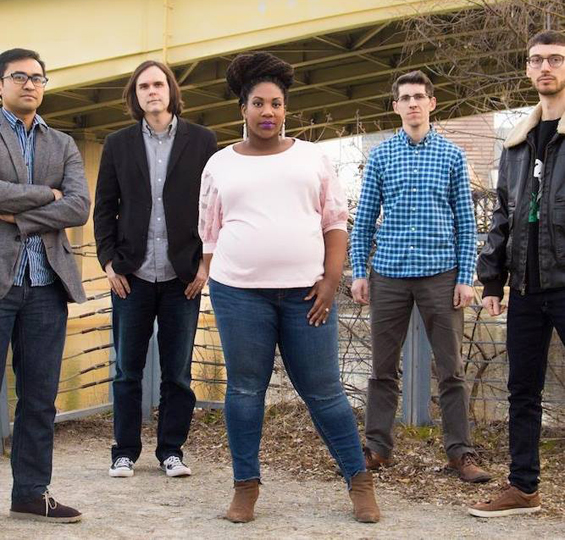
Kinetic
Favourite artists and strongest influences: Two contemporary jazz pianists: American Robert Glasper and Armenian Tigran Hamasyan. Both are completely fluent in jazz but convincingly embrace and integrate other musical worlds into their music and performances. In the case of Glasper, hip-hop and R&B. In the case of Hamasyan, Armenian folk, classical, and heavy metal!
Similarly, I'm amazed by the American vocalist Somi. Like the pianists above, she explores integration; in her case, modern jazz with East African roots. Her albums take the listener deep inside a certain place, whether its Lagos, Nigeria, or Harlem.
Finally, the music of Claude Debussy. What a gift for beautifully wrought and idiosyncratic forms, harmonies, and colours.
Recordings I return to repeatedly:
Morelenbaum2/Sakamoto: Casa (2001). I love albums that find a specific mood, then dwell in that space for a while. This is one of my absolute favourites. Spacious and understated, it arranges tunes of Antonio Carlos Jobim in stunning performances.
Somi: Lagos Music Salon (2014). In this album, she channels her experiences of living in Nigeria. Incredible songwriting and performances. Some moments are so tender, I can hardly listen. This album also has a special personal meaning, because it reminds me of my first trip to Ghana. It brings back the excitement, loneliness, love, and inspiration…
Herbie Hancock: The New Standard (1996). Some of the hippest, most exhilarating playing by Herbie on acoustic piano. Features Michael Brecker, John Scofield, Dave Holland, Jack DeJohnette, and Don Alias, all at their peaks. The last track, a solo piano original, is magical.
A memorable event, concert, or experience: While in graduate school in Bloomington, I attended the Lotus World Music Festival. It was my first in-depth encounter with high-level performers from different cultures. The first day of the festival, I saw an outdoor performance by a kora player from Mali, a Tibetan vocal ensemble singing inside a church, and a Brazilian choro ensemble in a music club. It shattered my understanding of what was possible through music and also opened my eyes to the almost limitless musical traditions and cultures out there.
website: JOE SHEEHAN
August 2018
![]()